Our Terms & Conditions | Our Privacy Policy
A Lifestyle Guru on the Best Things to Do in Mexico City
I firmly believe in the link between countries’ history and their ability to develop a rich, world-influential culture and design scene. With human activity documented in the area from as early as 9000 BC and roots stretching back to 1325 CE, when the Aztec people established what was then known as Tenochtitlan on an island in Lake Texcoco, it doesn’t surprise that Mexico City, which now occupies nearly the entirety of its drained basin, has grown into one of the most authentic creative hubs in the world. A place where craftspeople, artists, designers, and architects flock to in search of inspiration and an artistic community to belong to. That’s precisely why anyone interested in discovering the best things to do in Mexico City should first find a minute to appreciate its storied past.
If today, the destination is home to some of the best design hotels, acclaimed artistic institutions, UNESCO heritage-protected landmarks, and trailblazing artisan studios, it is largely because of what came before. It is on the ruins of Tenochtitlan that the Spanish conquistadors laid the foundations for present-day Mexico City, which, established in 1524, went on to become the country’s largest metropolis and capital.
Composed, like its history, of many interlacing layers, the cultural reality of Ciudad de México (CDMX) has seen key figures like artists-lovers Frida Kahlo and Diego Rivera borrow from the European Renaissance and Italian fresco painting tradition, respectively, as well as from local folk mythology and Indigenous iconography, to birth the Mexican Modernist and Muralism movements. The area’s Aztec and Mayan origins also wove their way into local Art Deco and brutalist buildings, where the canons of both architectural genres find a new, quintessentially Mexican look in colossal volumes and trapezoidal shapes akin to those of ancient temples and deeply evocative stone carvings, with the façades of Museo de Arte Popular, the Escuela de Ballet Folklórico de México, and the Monumento a la Revolución most emblematic of this fusion.
You may like
But it wasn’t until the dawn of the 20th century, when Le Corbusier’s alumnus and Guadalajara native Luis Barragán began to incorporate his observation of Mediterranean and North African architecture into projects that shared the linear functionality and commitment to better living of his maestro’s while making a cinematic palette of pinks, yellows, and blues his most dinstinctive trait, that Mexico City earned its name within the global design set. Selected for their unique contribution to CDMX’s contemporary zeitgeist with the arts and gastronomy-versed traveler in mind, the addresses gathered below bring you some of the best things to do in Mexico City, beyond the usual sites.
Artful Things to Do in Mexico City — A 48-Hour Guide
Day 1: Check Into
Condesa DF
French-Iranian architect and designer India Mahdavi’s Bishop Bar Stools, as spotted in Mexico City’s Condesa DF hotel.
(Image credit: Confesa DF. Design: India Mahdavi)
Av. Veracruz 102, Roma Nte., Cuauhtémoc, 06700 Ciudad de México, CDMX, Mexico
It seems to have become a habit of mine to instantly fall in love with a hotel only to later discover it is the work of French-Iranian architect and designer India Mahdavi. Like in the case of any other of the fantastical projects she executed which I have had the pleasure of coming across so far, Mexico City’s four-star stay Condesa DF lets you step inside her creative mind. Situated in the eponymous neighborhood of La Condesa in the southwestern part of town, this heritage-protected, 1928 French neo-classical building plays host to Mahdavi’s sculptural vision of decor in a hip, teal, white, and wood-washed sojourn that couples European mid-century modern charm with Mexico’s bustling atmosphere. The property, which comes furnished in minimalist objets d’art, like her iconic bishop bar stools, features western-style accents scattered across its airy, bright plan, an inner courtyard, and a filled-with-views rooftop bar.
Book your stay at Condesa DF.
Start the Day Off Right at
Taller Masa

One of the best Mexico City coffee shops for design-conscious globetrotters, Taller Masa ticks your cravings for pastries and chai tea off your to-do travel list.
(Image credit: Taller Masa)
Río Tigris 99, Cuauhtémoc, 06500 Ciudad de México, CDMX, Mexico
Blame my Italian genes, but my first day out in a different part of the world can’t get started unless I have sipped a good cup of coffee. This hip new cafe, sandwiched between La Condesa and Roma Norte in the Cuauhtémoc neighborhood, immediately caught my eye with its retro-inspired sign, fanciful visual design, and the quirky blue stools and mismatched furniture lined up on the patio outside. Besides the vibrant decor of the spot, which pairs rustic terracotta outdoor planters, industrial brick walls, and chocolatey-tinted, glazed tilework with joyful handpainted murals, locals have made it their go-to stop for generously sized, standout pastries and unexpected blends of chai. So, while you search for more brilliant things to do in Mexico City during a 48-hour stay, stop by for a cinnamon bun to set yourself up for the day.
Learn more about Taller Masa.
Meet the New Art Avantgarde at
OMR
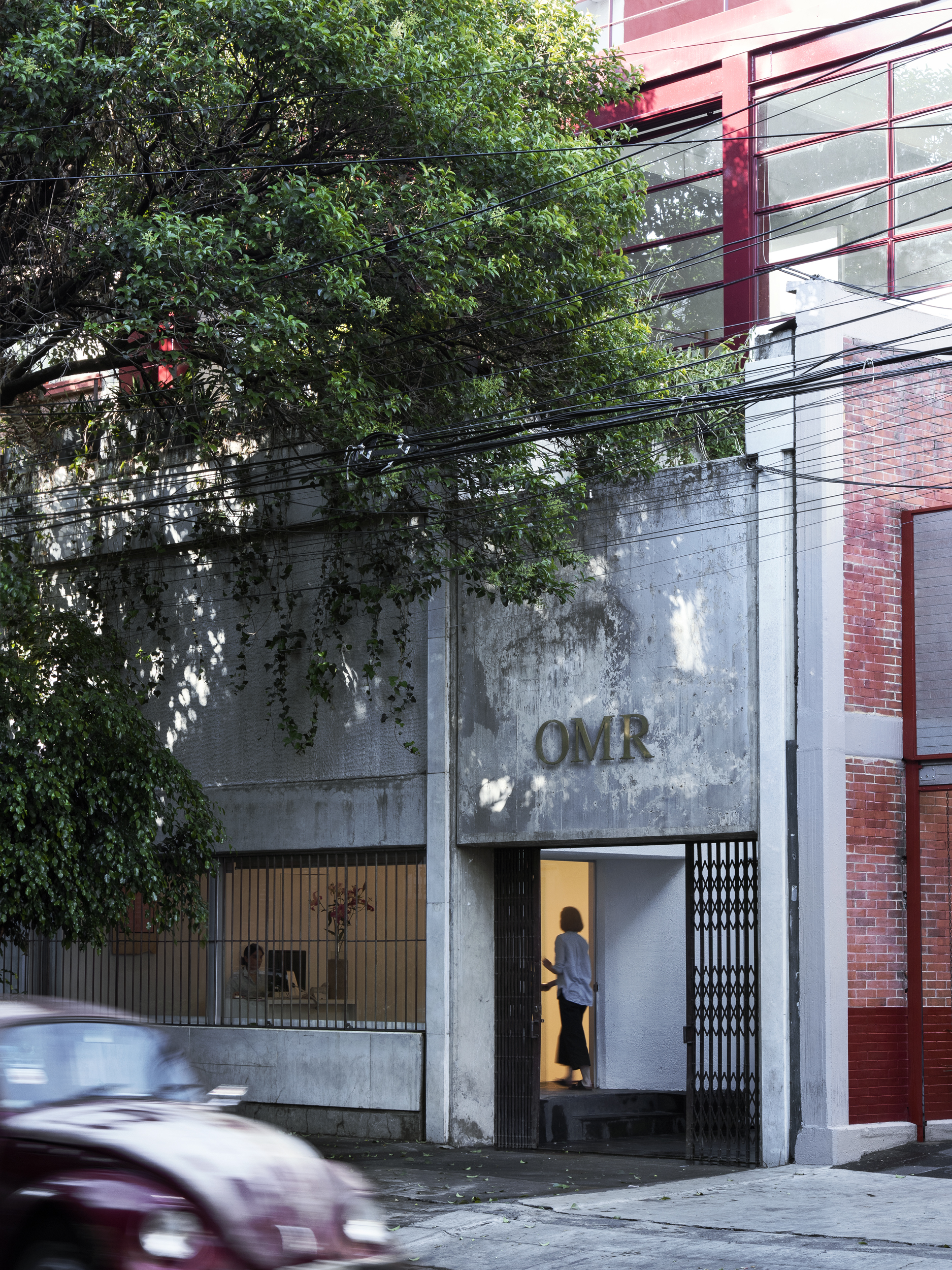
The façade of OMR, a burgeoning art gallery nestled in Mexico City’s teeming-with-talent-and-life Roma Norte district.
(Image credit: OMR)
Córdoba 100, Roma Nte., Cuauhtémoc, 06700 Ciudad de México, CDMX, Mexico
Founded in 1983 by Patricia Ortiz Monasterio and Jaime Riestra, Roma Norte’s gallery OMR takes an intersectional approach to contemporary art to address the challenges that shape our past, present, and future via the cultural experimentation of the talents it champions. Currently representing the likes of Dutch architecture and product design studio Atelier Van Lieshout and Polish interdisciplinary artist Alicja Kwade and Mexican visual and sound artist Pablo Dávila, sculptor Jose Dávila, and installation artist Pia Camil, its calendar of thought-provoking exhibitions sets the tone for Mexico City’s cultural playground. And it doesn’t do so exclusively through these events’ end result: “Mexico City is raw, unexpected, unconventional. It sparks a drive for disruption and fuels creativity,” OMR’s director Louise Carla Sala says of the city that the platform calls home. “Still, what makes the city particularly attractive for artists today, I believe, is the proximity to exceptional craftsmanship,” she adds. “At OMR, we encourage artists to source materials locally and support them in producing their exhibitions in-house. This helps strengthen the ecosystem in a sustainable and endurable way, connecting the local with the global.”
Plan your visit to OMR.
Get Lost in the Mazy Interiors of
Biblioteca Vasconcelos

Unveiled by architects Alberto Kalach and Juan Palomar in 2006, Biblioteca Vasconcelos houses more than 600,000 volumes, but it’s its mesmerizing shelves that will keep you coming back.
(Image credit: Getty Images. Design: Alberto Kalach and Juan Palomar)
Eje 1 Nte. S/N, Buenavista, Cuauhtémoc, 06350 Ciudad de México, CDMX, Mexico
I have always found public libraries to have an unexplainable allure to them, but Alberto Kalach and Juan Palomar’s Inception-like, extraordinary vision for Biblioteca Vasconcelos — one of the many things design-obsessed travelers shouldn’t miss when in Mexico City — has this iconic building in the Buenavista district play a game of its own. Open since 2006, Biblioteca Vasconcelos doesn’t just house over 600,000 volumes in Spanish as well as other foreign languages on its mazy shelves, but it is one of the city’s coolest architectural attractions in itself. Against a brutalist, industrial frame, pops of color bring the site to life via sculptural mid-century modern furniture and trailing plants, while artist Gabriel Orozco’s Mobile Matrix — a colossal whale skeleton excavated from Baja California’s Isla Arena and now floating mid-air — simultaneously emphasizes and condemns the merging of nature and human-made environments that serves as a leitmotif of the space.
Plan your visit to Biblioteca Vasconcelos.
Dive Into Taste — 360° — at
LagoAlgo and Laguna
Image 1 of 4
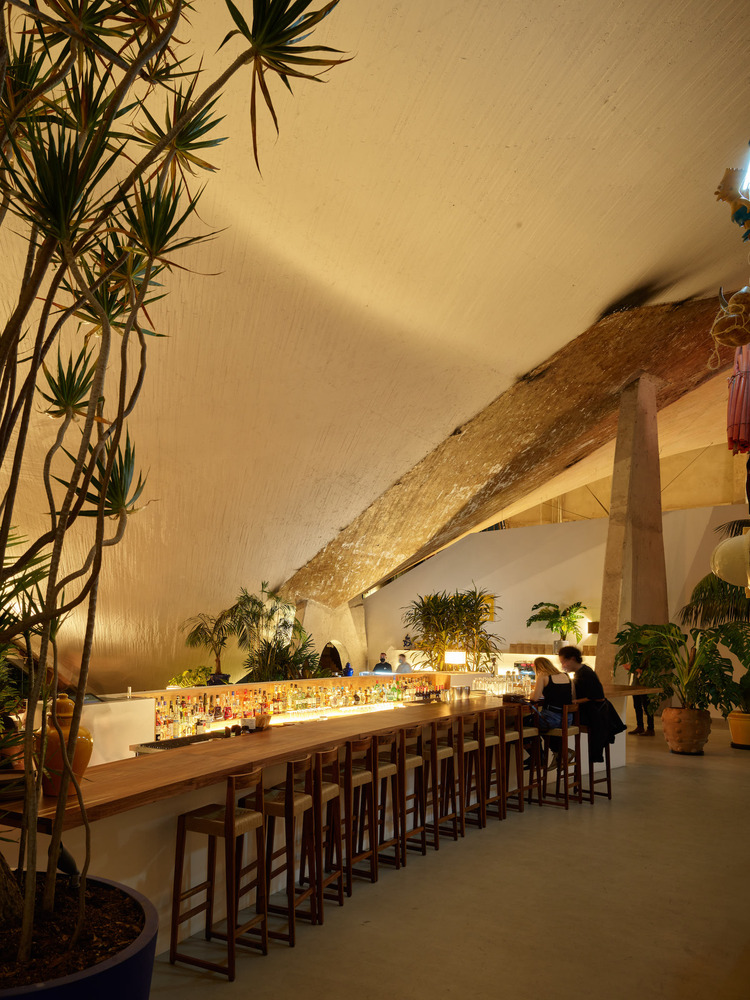 Originally designed by Leónides Guadarrama and Alfonso Ramírez Ponce in 1964 ahead of the 1968 Olympics, the former restaurant has been reinvented as a multifunctional platform for all things art, gastronomy, and lifestyle by gallery OMR.(Image credit: Fernando Marroquín. Courtesy of LagoAlgo. Originals: Leónides Guadarrama and Alfonso Ramírez Ponce (1964), Javier Sordo Madaleno (1998). Design: Naso)
Originally designed by Leónides Guadarrama and Alfonso Ramírez Ponce in 1964 ahead of the 1968 Olympics, the former restaurant has been reinvented as a multifunctional platform for all things art, gastronomy, and lifestyle by gallery OMR.(Image credit: Fernando Marroquín. Courtesy of LagoAlgo. Originals: Leónides Guadarrama and Alfonso Ramírez Ponce (1964), Javier Sordo Madaleno (1998). Design: Naso) A modernist jewel, it is undoubtedly one of the best things to see in Mexico City if you are a fan of the 20th-century style.(Image credit: Jose Ignacio Vargas. Courtesy of LagoAlgo. Originals: Leónides Guadarrama and Alfonso Ramírez Ponce (1964), Javier Sordo Madaleno (1998). Design: Naso)
A modernist jewel, it is undoubtedly one of the best things to see in Mexico City if you are a fan of the 20th-century style.(Image credit: Jose Ignacio Vargas. Courtesy of LagoAlgo. Originals: Leónides Guadarrama and Alfonso Ramírez Ponce (1964), Javier Sordo Madaleno (1998). Design: Naso)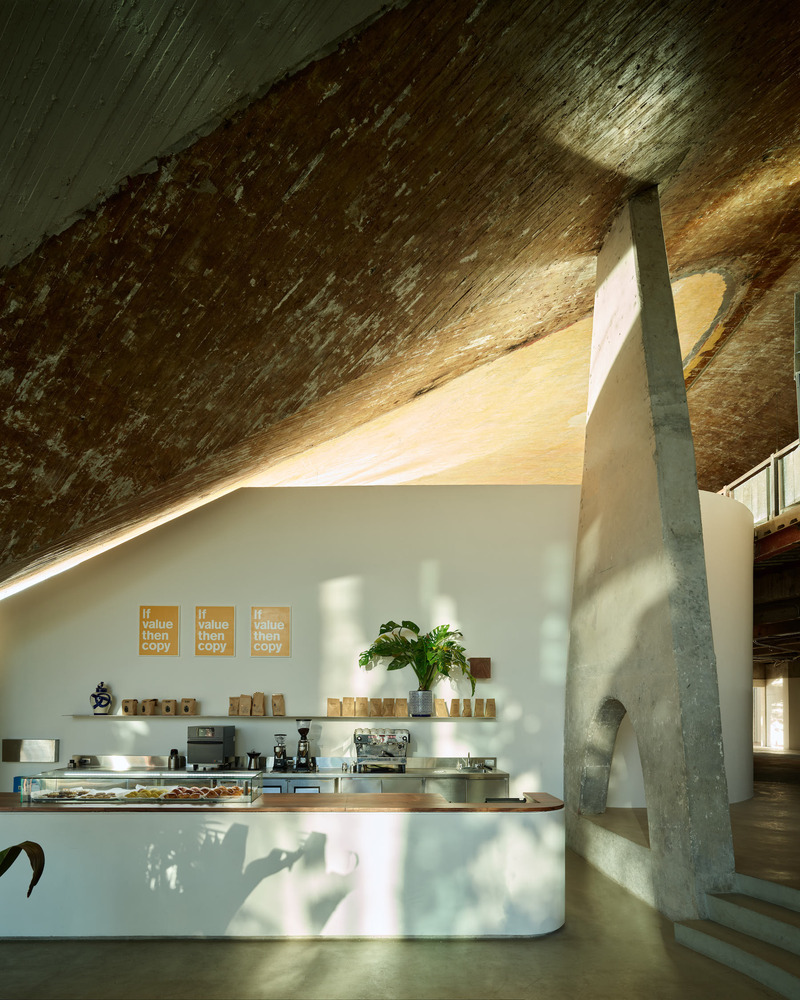 The cafe corner at LagoAlgo, a farm-to-table restaurant and gallery space situated on the edge of Lago Mayor inside Mexico City’s Bosque de Chapultepec.(Image credit: Fernando Marroquín. Courtesy of LagoAlgo. Originals: Leónides Guadarrama and Alfonso Ramírez Ponce (1964), Javier Sordo Madaleno (1998). Design: Naso)
The cafe corner at LagoAlgo, a farm-to-table restaurant and gallery space situated on the edge of Lago Mayor inside Mexico City’s Bosque de Chapultepec.(Image credit: Fernando Marroquín. Courtesy of LagoAlgo. Originals: Leónides Guadarrama and Alfonso Ramírez Ponce (1964), Javier Sordo Madaleno (1998). Design: Naso) The courtyard at Laguna, an interdisciplinary platform promoting activities across design, architecture, urban planning, gastronomy, and art from an industrial warehouse situated within the Doctores neighborhood’s rising creative hub. (Image credit: Laguna)
The courtyard at Laguna, an interdisciplinary platform promoting activities across design, architecture, urban planning, gastronomy, and art from an industrial warehouse situated within the Doctores neighborhood’s rising creative hub. (Image credit: Laguna)
Bosque de Chapultepec, Pista El Sope S/N, Bosque de Chapultepec II Secc, Miguel Hidalgo, 11100 Ciudad de México, CDMX, Mexico; C. Dr. Lucio 181, Doctores, Cuauhtémoc, 06720 Ciudad de México, CDMX, Mexico
LagoAlgo, gallery OMR’s institutional arm, “was founded to fill an existing gap between public and private institutions,” Louise Carla Sala tells me. Launched in the summer of 2022, “it’s a new model, similar to a ‘kunsthalle‘ that’s at the crossroads between a public space, a foundation, a cultural institution, and a museum.” More than an exhibition platform (Algo), it is also a restaurant (Lago) that leverages taste as a vehicle for cross-cultural dialogue in its culinary residencies, and boasts a farm-to-table menu centered around local, free-range meat, responsibly sourced seafood, and chemical-free produce from the Teotihuacan, Xochimilco, and Huasca regions. Unsurprisingly, “LagoAlgo quickly became very attractive for younger audiences and families, making art more accessible through interactive presentations and a curated program of activities revolving around art, literature, cinema, and wellness,” says Louise Carla. “In just a few years, LagoAlgo became one of the most visited institutions in the city. It is the living proof of how Mexico City is fertile ground for innovation — not only in the arts, but in hospitality, entrepreneurship, and more.”
Something similar happens at cultural think tank Laguna, an interdisciplinary platform promoting activities across design, architecture, urban planning, gastronomy, and art from an industrial warehouse situated within the Doctores neighborhood’s rising creative hub. Hosting a recurring program of artist residences conceived to ponder the many ways in which “we resist, care about, and build a sense of community” as well as crafty workshops, heading to the project’s headquarters might be one of the best things to do in Mexico City for international artists wanting to experience its scene from the inside.
Learn more about LagoAlgo. Learn more about Laguna.
Day 2: Feel the Earth and Flavors of Mexico at
Tierra Garat
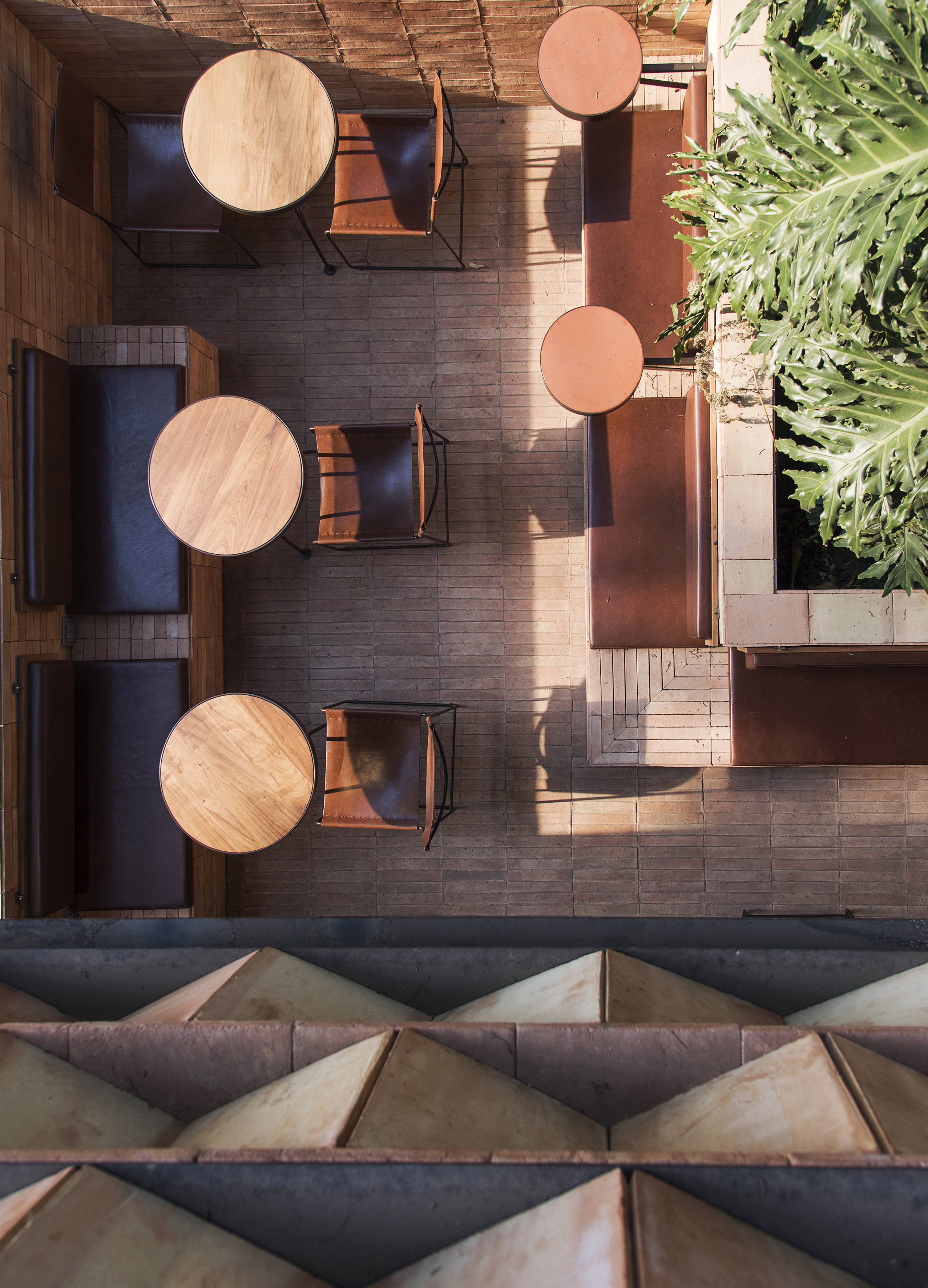
Essential, sun-bathing lines and lush tropical vegetation unite at Mexican coffee and chocolate specialist Tierra Garat’s Masaryk location.
(Image credit: Tierra Garat. Design: Esrawe Studio and Cadena y Asociados)
Tierra Garat, Av. Pdte. Masaryk 86, Polanco, Polanco V Secc, Miguel Hidalgo, 11560 Ciudad de México, CDMX, Mexico
Those of you who have read my guide to the best cafes in London know how much of an influence decor can have on the addresses we choose to keep in our books. This theatrically envisioned address by Tierra Garat, a chain devoted to celebrating Mexico’s traditional flavors through responsibly sourced beans from its coffee and chocolate-growing regions, makes grabbing a hot drink and a snack into one of the most design-driven things to see in Mexico City. A creative collaboration between Esrawe and Cadena + Asociados Concept Design, the space comes alive via terracotta-clad, textural surfaces, ondulating lines, organic collectibles, and an earthy color palette. With plenty of space to sit both indoors and outside, Tierra Garat is the perfect place to warm yourself up ahead of a busy day on the move. Just pick your favorite table by the terrace, soak up the sun, and relax.
Find out more about Tierra Garat.
Freshen Up at
Jardín Botánico del Bosque de Chapultepec

A green lung in the heart of the city, the Bosque de Chapultepec immerses travelers and locals in Mexico City’s natural heritage, and its brutalist botanical garden is just as noteworthy.
(Image credit: Getty Images)
Av. P.º de la Reforma 126, Bosque de Chapultepec I Secc, Miguel Hidalgo, 11580 Ciudad de México, CDMX, Mexico
With a population of nearly 10 million people, and a metropolitan area home to some 22, CDMX is one of the busiest destinations in the world. While researching things to do in Mexico City over a weekend, no one should underestimate the added value its leafy spaces — from the urban Parque La Mexicana and the folklore-laden Parque Ecologico Xochimilco to the hike-ready Los Dinamos — bring. Part of the 866-hectare-spanning Bosque de Chapultepec, an expansive stretch of green dotted with archeological wonders from the area’s Aztec times, unique specimens, and life-size sculptures, the Jardín Botánico del Bosque de Chapultepec presents a spectacular collection of native tropical plants in and around a brutalist cement greenhouse brought to life by blue tiles and just minutes away from the buzzy Paseo de la Reforma.
Plan your visit to the Jardín Botánico del Bosque de Chapultepec.
Become One With Mexico City’s Creative Community at
Tetetlán
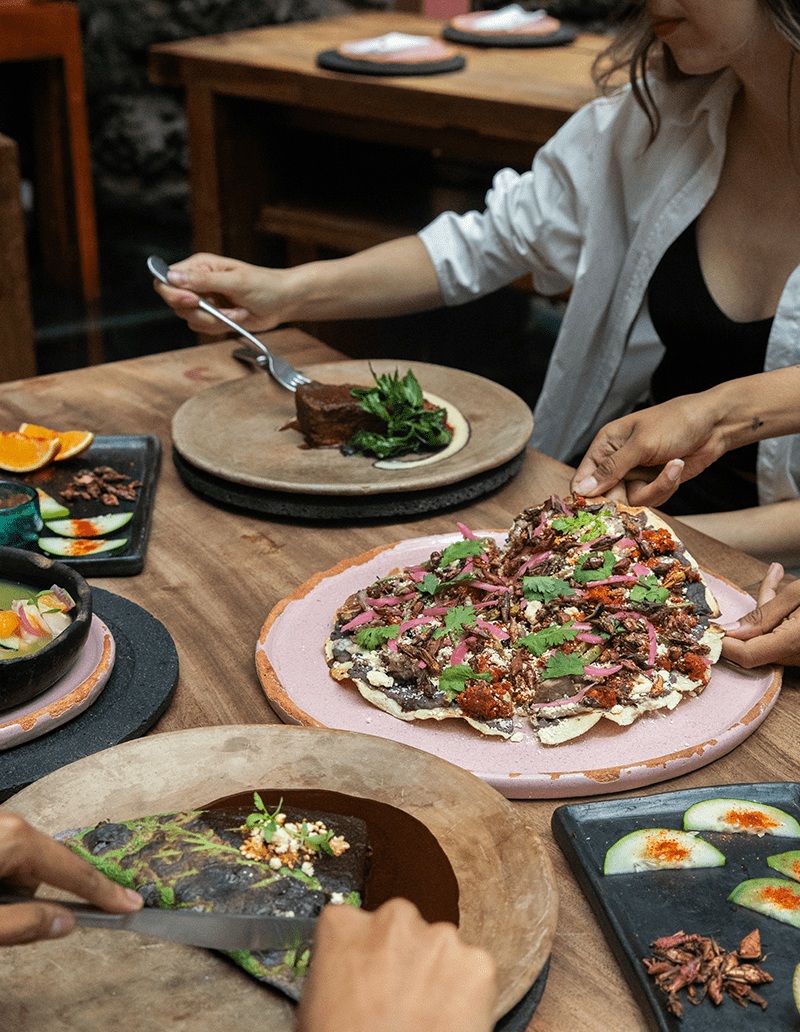
Situated in the former stables of a house designed by pioneering Mexican architect Luis Barragán, Casa Pedregal, Tetetlán celebrates the country’s design heritage through community-building initiatives spanning food, culture, wellness, and art.
(Image credit: Tetetlán. Originals: Luis Barragán. Design: Jorge Covarrubias)
Av. de Las Fuentes 180 – B, Jardines del Pedregal, Álvaro Obregón, 01900 Ciudad de México, CDMX, Mexico
The cultural legacy of Luis Barragán, the most prominent figure in modern Mexican architecture, lives on at Tetetlán, a thriving community restaurant, cultural center, library, artist residency, and yoga space tucked away in what were once the stables of one of the houses he designed in his 60-year career, Casa Pedregal. Located in a scenic residential area in the southwestern part of Mexico City, Tetetlán is the life project of César Cervantes, an art collector who gave up a 20-year-in-the-making artsy loot just to get his hands on this one buy. With the help of Parque Humano’s Jorge Covarrubias, the Jardines del Pedregal local brought the pink hue that served as the trademark of Barragán’s designs into the building, opening it up to the public as a lively eatery with local produce and craftsmanship at its heart.
Book your table at Tetetlán.
Lose Yourself to Paper — and Sweet Treats — at
Casa Bosques

(Image credit: Adrianna Glaviano. Design: Savvy Studio)
Córdoba 25, Roma Nte., Cuauhtémoc, 06700 Ciudad de México, CDMX, Mexico
As a paper and pen-addicted editor, I have come to discover the best bookshops in London and beyond. One of the best things to do in Mexico City, paying a visit to the Roma Norte marvel of a store that is the Savvy Studio-designed Casa Bosques will open you up to a world of its own. This isn’t your everyday printed matter stop: Casa Bosques is an imaginatively designed bookshop, chocolate atelier, guesthouse, and artist residency, all in one.
Founded in 2012 by Rafael Prieto and Jorge de la Garza, it is a treasure trove of the finest 20th and 21st-century monographs, catalogues, and magazines, with a forward-thinking curation that spans the spectrum and intersection of today’s creative disciplines. Here, volumes are displayed on immersive wooden shelves. The adjacent chocolaterie, meanwhile, produces artisanal, tree-to-bar treats rooted in Mexico’s ancient agricultural practices, while the rooms at Casa Bosques stand out as an ever-becoming collage incorporating the works of best-in-class talents across ceramics, textile art, painting, and design.
Learn more about Casa Bosques.
Discover a Workshop of Culinary Innovation at
Pujol
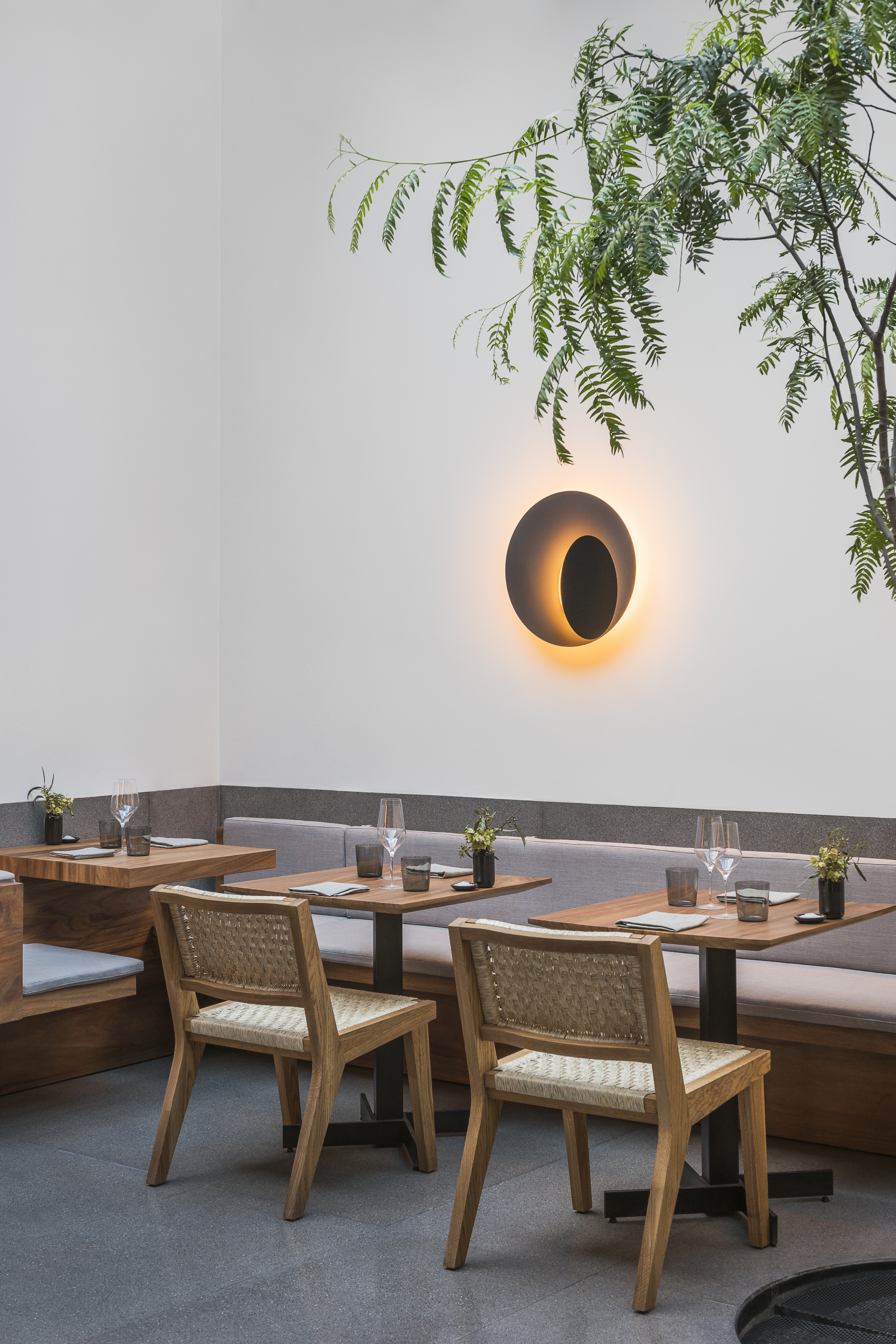
Two-Michelin star restaurant Pujol is among the best restaurants in the whole world. But if its menus are unexpected and innovative, so is its painstakingly balanced interior design.
(Image credit: Luis Gallardo (LGM Studio). Design: JSa)
Tennyson 133, Polanco, Polanco IV Secc, Miguel Hidalgo, 11570 Ciudad de México, CDMX, Mexico
Pujol, chef Enrique Olvera’s two-Michelin-star restaurant, might have well changed since launching in 2000 as an Asian and American-infused eatery in the affluent district of Polanco in the western portion of Mexico City, but its desire to put a spin on traditional Mexican cuisine has stayed the same. Conceived by architecture studio JSa with Micaela de Bernardi on the interiors, with its boundary-pushing approach to gastronomy, Pujol has earned itself a reputation as one of the best restaurants in the world.
Its packed-with-spice Mole Madre, Mole Nuevo signature dish, for example, combines a sauce the establishment has been brewing for years with a fresher batch of it into an eye-catching composition that captures the artistry that lies in cuisine. If you think here taste is limited to the eatery’s seven-course tasting menu and unpredictable Omakase-style dining experience, you are missing out on part of its charm. Set in a stone and glass-clad, modernist building teeming with natural light and dressed in geometrical decor, Pujol relies on wide open spaces, warm wood notes, and thriving plants to blur the boundaries between the indoor and the outdoor.
Book your table at Pujol.
Before You Go
What Are the Coolest Neighborhoods in Mexico City?
Image 1 of 4
 Known for its evocative folklore, religious rituals, indigenous traditions, and syncretic practices, Mexico City is a place to get lost into and explore.(Image credit: Getty Images)
Known for its evocative folklore, religious rituals, indigenous traditions, and syncretic practices, Mexico City is a place to get lost into and explore.(Image credit: Getty Images)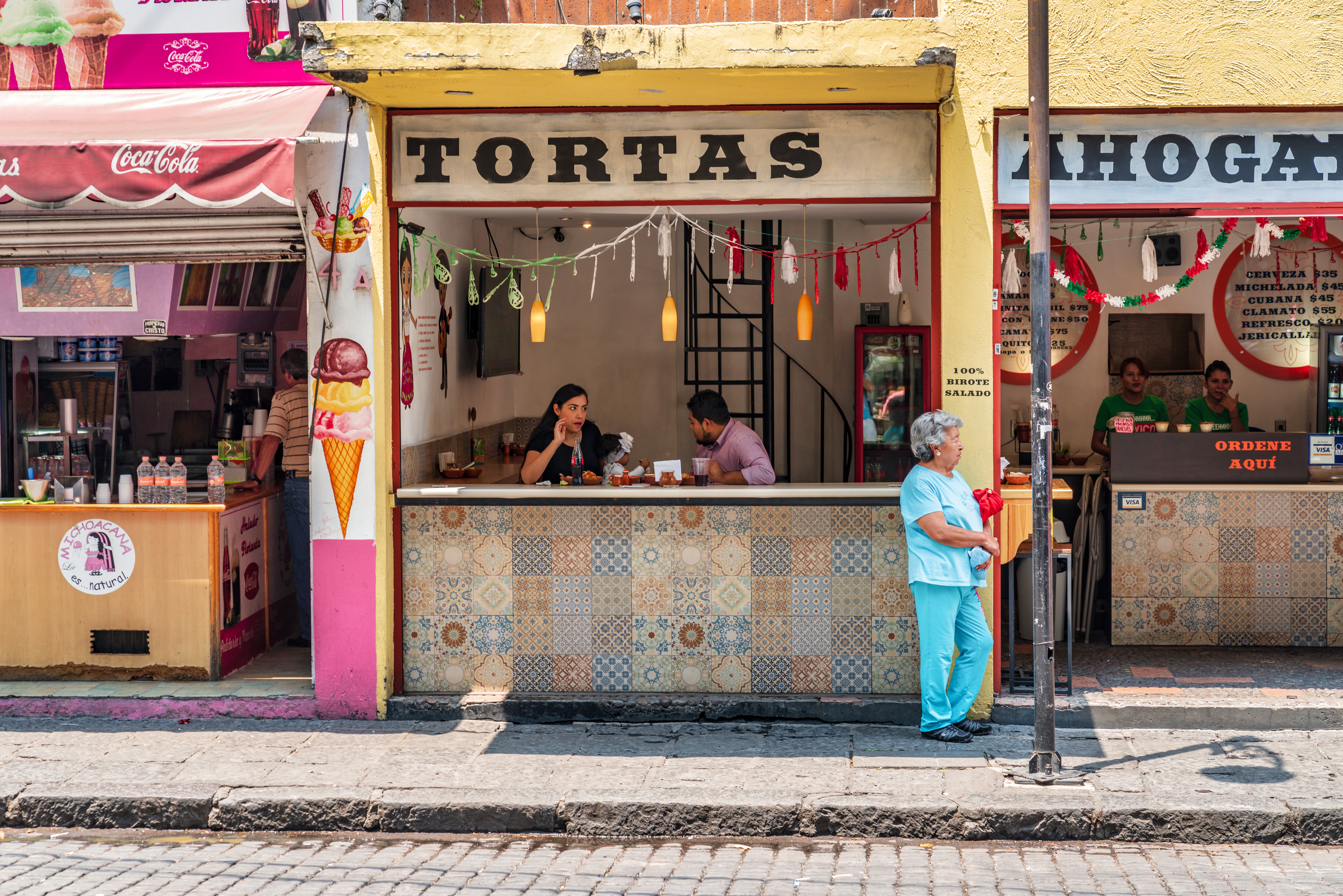 When out and about, make sure to make the most of Coyoacán’s bustling food scene: savoring the delicacies served on its colorful stalls is one of the best things to do in Mexico City.(Image credit: Getty Images)
When out and about, make sure to make the most of Coyoacán’s bustling food scene: savoring the delicacies served on its colorful stalls is one of the best things to do in Mexico City.(Image credit: Getty Images) Maize plays a key role in Mexico City’s and wider Mexican food culture. (Image credit: Getty Images)
Maize plays a key role in Mexico City’s and wider Mexican food culture. (Image credit: Getty Images)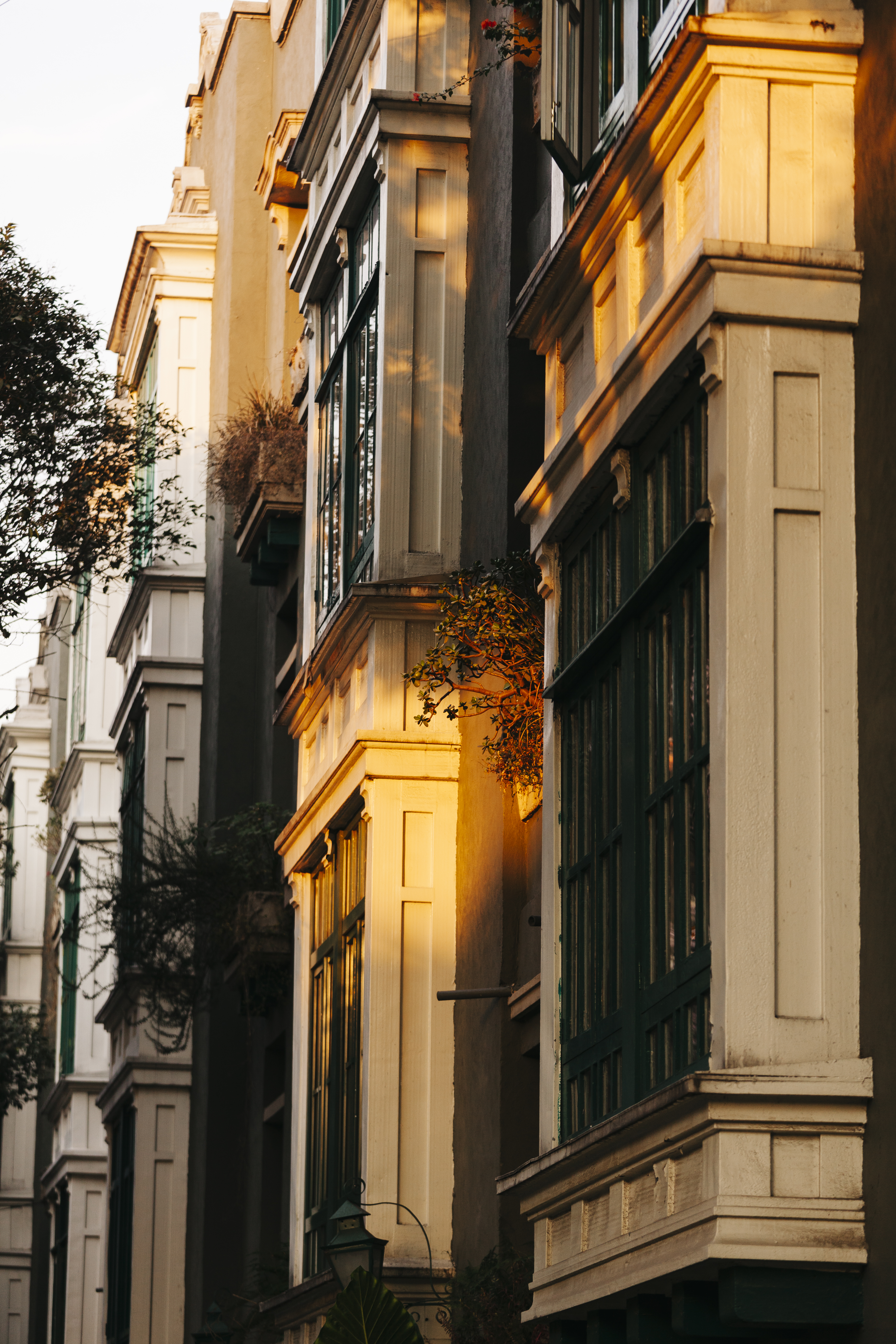 The exterior of a residential block in La Condesa, one of the most picturesque districts in Mexico City.(Image credit: Getty Images)
The exterior of a residential block in La Condesa, one of the most picturesque districts in Mexico City.(Image credit: Getty Images)
Because of our obsession with everything interior design, art, and lifestyle, our answer to this question will relate to the following: where should travelers go to immerse themselves in the very best of Mexico City’s vibrant culture and nightlife? While Mexico City’s Centro Histórico, with its plethora of steeped-in-history buildings, including the sacred Aztec temple of Templo Mayor — a monument to the area’s ancient origins, and a functioning museum — offers a great place to start exploring, it is in the artsy, trendier districts of Roma Norte, known for its bohemian atmosphere, vintage boutiques, galleries, and cinematic restaurants, the artsy Coyoacán, a quieter, picturesque district home, among the others, to the Frida Kahlo Museum, La Condesa, bringing you a breath of fresh air with its two green lungs, Parque México and Parque España, a certain European flair, and endless entertainment via its many restaurants, cafes, and bars, and the luxurious Polanco, your trusted destination for designer shops and world-class eateries, that most stop-worthy attractions are at.
Forget your usual European hotspots: this year, we want our readers to think out of the box when it comes to booking a holiday. From four of the best places to visit in France outside of Paris to more 48-hour guides in the name of great food, design, and under-the-radar attractions (see the one we recently ran on the best things to do in Arles, Provence, to get a taste of our lens), we are here to help.
Searching for the best Airbnb alternatives for design-obsessed globetrotters? You’ll be happy to hear that burgeoning Swedish designer Gustaf Westman’s home is currently up for grabs for short-term rentals via private members’ home swapping club Kindred.
Images are for reference only.Images and contents gathered automatic from google or 3rd party sources.All rights on the images and contents are with their legal original owners.



Comments are closed.